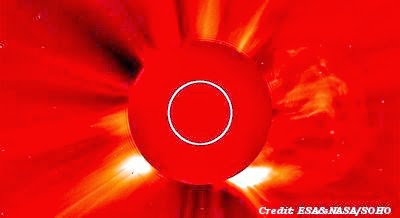| Online: | |
| Visits: | |
| Stories: |

| Story Views | |
| Now: | |
| Last Hour: | |
| Last 24 Hours: | |
| Total: | |
Massive Solar Blast That Almost Wreaked Havoc On Earth

3-19-14
Earth dodged one of the most massive magnetic solar bursts ever on July 23, 2012, scientists with the University of California, Berkeley revealed on Wednesday — saving the planet from widespread havoc.
“Had it hit Earth, it probably would have been like the big one in 1859, but the effect today, with our modern technologies, would have been tremendous,” UC Berkeley research physicist Janet G. Luhmann said in a press release.
According to researchers had the quick succession of coronal mass ejections, the most intense kind of solar eruptions, come nine days earlier, it would have hit Earth, potentially disabling satellites and GPS and the electrical grid.
A study from last year revealed that a solar storm like the one Earth narrowly avoided could have cost up to $2.6 trillion in damages. A similar event in March 1989 caused Canada’s Hydro-Quebec power grid to collapse and left six million people with no electricity for nine hours.
This is due to the fact that all critical infrastructures on which a technological society such as the United States depends would fail in a cascading effect once the grid is knocked out.}



